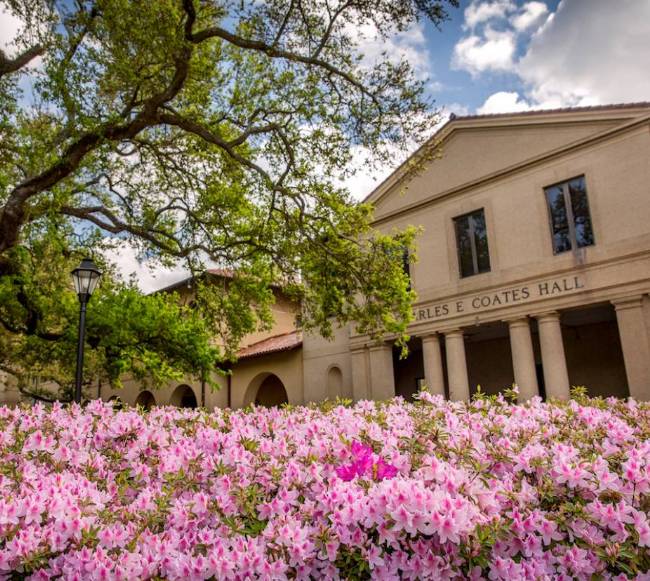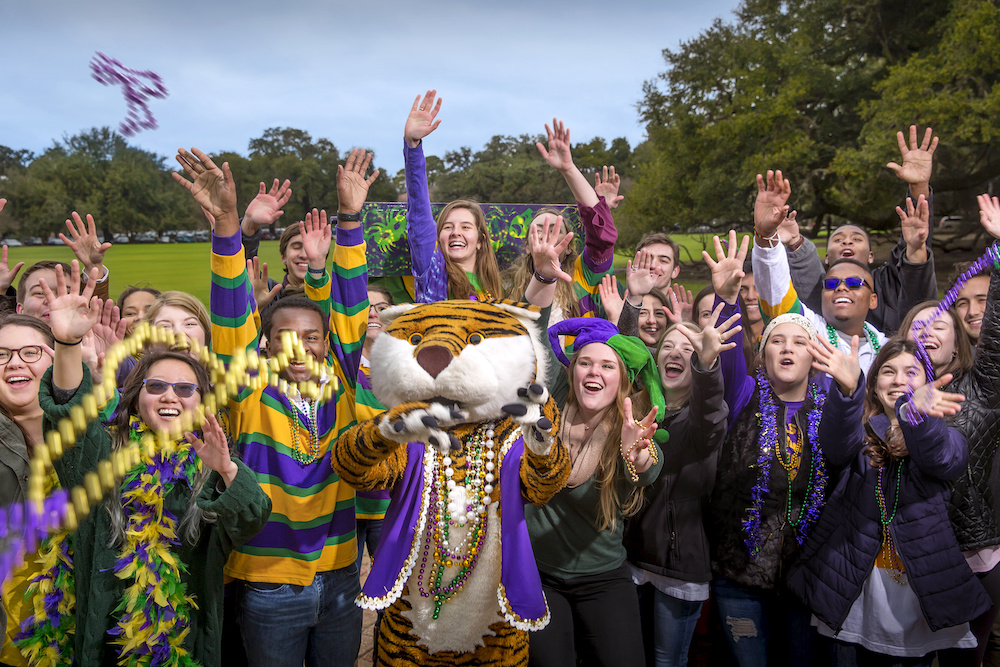Do You Kneaux Mardi Gras?
February 15, 2023
Mardi Gras might be a time for fun and games but LSU has experts that study this holiday season. From the history and traditions to the economic impact,
laissez les bon temps rouler* with us in Baton Rouge. Translation: *Let the good times
roll.
What is Mardi Gras?
Mardi Gras is French for Fat Tuesday and is the last day before the Catholic Season of Lent, when fasting begins. So, “Fat Tuesday” is the last day that people can indulge until Easter.
What’s the deal with the parades?
The parades are a Mardi Gras tradition and organized by Mardi Gras Krewes (pronounced “crews”). Each Krewe has its own royal court and hosts many parties and balls during Carnival Season. Their final event is typically the parade, which will take place during the weeks leading up to Mardi Gras. There are parades all over the state, including Baton Rouge, but the most famous parades take place in New Orleans.
Mardi Gras Colors: Purple, Green and Gold
The colors of Mardi Gras were selected by the Krewe of Rex in 1872. Purple represents justice, green represents faith and gold represents power.
Mardi Gras Colors and LSU Colors
LSU’s colors were influenced by the Mardi Gras colors. As the story goes, in preparation for LSU’s first football game against in-state rival Tulane in 1893, LSU football coach Dr. Charles E. Coates, football team captain (and later Louisiana governor) Ruffin Pleasant and others went to Reymond’s store in Baton Rouge. They were in search of colorful ribbon to adorn the football uniforms. The store had stocked up for Carnival Season, but the green ribbon had not yet arrived. Coates thought the purple and gold made a great combination, so he bought out their stock. From then on, LSU’s colors were purple and gold.
King Cake
King cakes are braided and baked cakes, topped with icing and sugar in the Mardi Gras colors. In Louisiana, it is traditionally reserved for enjoyment during the Carnival Season. It is first served on King’s Day (January 6) and lasts through the end of Mardi Gras. A traditional king cake comes without a filling inside, but over time, many bakeries began adding cream cheese, fruit or chocolate.
King Cake Baby
Traditionally, a small plastic baby representing Jesus is hidden in the cake. Tradition says whoever gets the king cake piece containing the plastic baby is supposed to provide the king cake for the next gathering.
“Throw me something, mister!”
Heads up! As you watch the parade, get ready to catch what is thrown, like beads. Beads of different colors, shapes and sizes are thrown from the floats or handed out to the revelers on the route, along with a variety of other trinkets, including doubloons, cups, plush toys, even coconuts and shoes. You’ll often hear parade-goers shout “Throw me something mister!”
Biodegradable Mardi Gras Beads
Tens of thousands of pounds of Mardi Gras beads are discarded each year. LSU Department of Biological Sciences Professor Naohiro Kato has been concerned about the problem the excess plastic from Mardi Gras poses for the environment for years; and as a biologist, he is creating solutions. Kato and his LSU students have developed a process to produce biodegradable plastic. He and his students at LSU grow microscopic algae, harvest it and process it into a powder that can be used to create multiple products including biodegradable Mardi Gras beads. After the fun is had, these celebratory throws are expected to biodegrade in soil in about one to two years. Read more about the environmentally friendly discovery: https://www.lsu.edu/mediacenter/news/2022/02/16biosci_kato_beyondbeads.php



